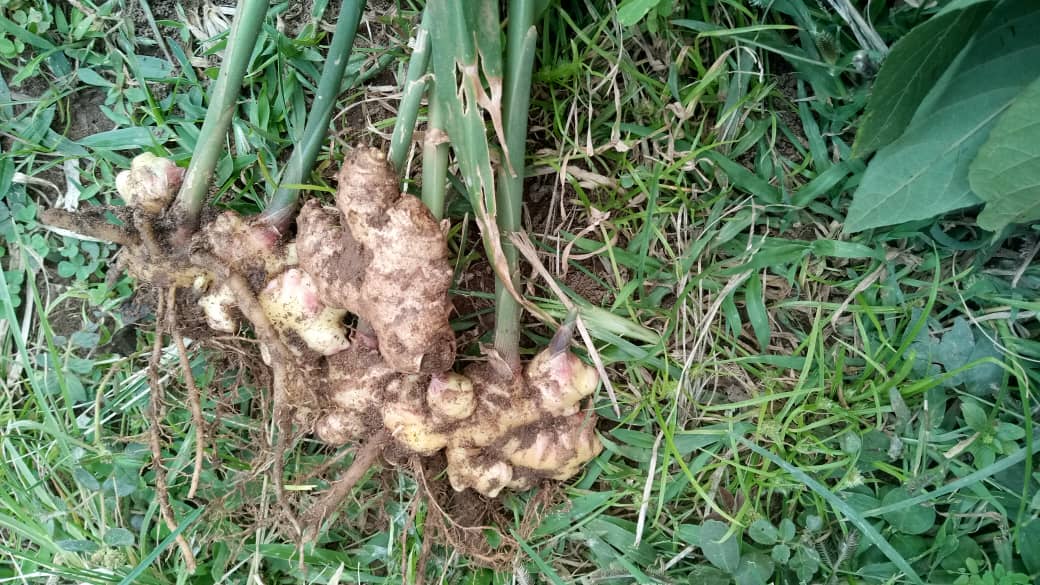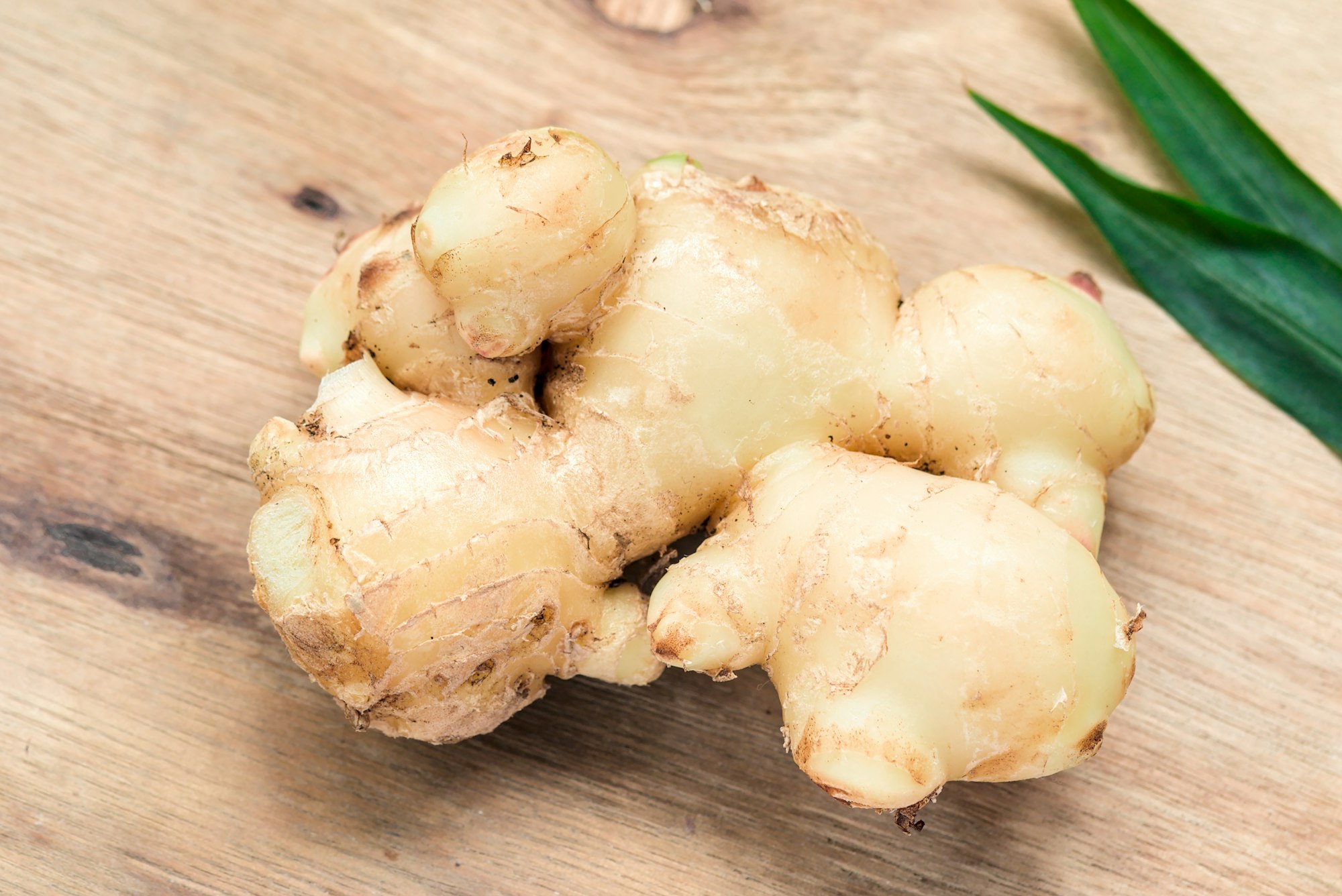How to Grow Ginger
Growing ginger at home can be a rewarding experience.

Table of Contents
Not only is ginger a flavorful and versatile spice used in cooking around the world, but it can also be easily grown as a rhizome, the fleshy underground portion of the plant which sends out roots and shoots.
About Ginger Plant
Ginger (Zingiber officinale) is a tropical plant from the herb family.
Originating from Southeast Asia, it has been used for centuries for culinary, medicinal, and ornamental purposes.
As a tropical plant, ginger thrives in warm, humid environments, making it suitable to grow outdoors in such conditions or containers.
By following proper care instructions, you can grow this fragrant herb in your garden and enjoy its numerous benefits.
Growing Ginger
To plant ginger, purchase a firm, healthy ginger rhizome with several visible buds from your local grocer.
Cut the ginger rhizome into pieces 1-1.5 inches (2.5-3.8 cm), ensuring each has at least one bud.
Plant ginger rhizomes in the spring, spacing them one plant per square foot (0.1 sq. m.) in well-draining, fertile soil.
Water the planted rhizomes thoroughly and maintain consistent moisture as leaves begin to emerge. Once leaves appear, water the ginger plant sparingly, but ensure deep watering when you do so.

Caring for Ginger Plant
Sun and Temperature
Ginger thrives in partial or indirect sunlight. Keep your plant at around 68 °F (20 °C) for optimum growth.
Water and Humidity
It's essential to keep the soil consistently moist but avoid over-watering. Ginger benefits from high humidity, so consider placing a tray filled with water nearby to help maintain moisture levels.
Soil
Your ginger plant will grow well in a rich, well-draining, loamy soil. Incorporate plenty of organic matter, such as compost or mulch, to improve drainage and provide valuable nutrients.
Fertilizer
Feed your ginger plant with an organic fertilizer, like compost or worm castings, once every few weeks. This will keep the plant healthy and promote vigorous growth.
Repotting
Repot your ginger plant into larger containers when it outgrows its current pot. Use a well-draining potting mix or potting soil to ensure its continued growth.
Pruning and Propagation
To propagate ginger, cut rhizome sections with healthy growth buds and pre-sprout them before planting.
Prune your ginger plant by trimming off dead or yellowing leaves to promote new growth and improve its health.
Troubleshooting Plant Problems
Growing Problems
To ensure healthy ginger growth, maintain a well-draining soil and avoid overwatering.
If you notice yellowing leaves, it could be a sign of waterlogged soil, so improving the drainage may help.
Ginger requires warm temperatures, ideally above 50°F. In colder climates (zones 6 or below), grow ginger in containers and move them inside or under cover when temperatures drop.
Pests and Diseases
Aphids and spider mites are common pests that can infest ginger plants.
To mitigate these issues, regularly inspect your plants, and if necessary, use insecticidal soap or neem oil to treat infestations.
Bacterial soft rot is a disease that can affect ginger, caused by gram-negative bacteria such as Erwinia, Pseudomonas, or Pectobacterium.
To prevent this, ensure proper spacing between plants for good air circulation and practice good sanitation by removing infected plant parts.
Companion Planting
When growing ginger, it's essential to avoid rotating it with certain plants that may share pathogens, such as tomatoes, peppers, eggplants, or tomatillos.
Planting ginger alongside beneficial companions, like marigolds or basil, can offer protection against pests and improve overall growth.
Conclusion
Growing ginger can be a simple and rewarding experience if you provide the appropriate conditions.
Ensure your ginger plants are in a warm, tropical climate with temperatures between 70°F (21°C) and 90°F (32°C), as well as a loose, well-draining soil rich in organic matter.
Remember to provide your ginger plants with partial shade or filtered sunlight, which promotes optimal growth.
Once you've harvested your ginger, you can use it in various culinary dishes and enjoy its health benefits. Happy growing!
Frequently Asked Questions
What is the ideal environment for ginger growth?
Ginger thrives in warm, humid conditions and well-draining, fertile soil. Ensure you provide it with partial shade, as too much direct sunlight can negatively affect its growth.
How long does it take for ginger to mature?
Ginger typically takes about 8 to 10 months to reach maturity. You'll know it's time to harvest when the leaves turn yellow, and the above-ground stems wither.
What is the proper planting depth for ginger?
Plant ginger rhizome pieces about 1 to 1.5 inches deep in the soil, with the buds facing upwards. Space the rhizomes about 12 to 15 inches apart to give them ample room for growth.
Can ginger be grown from store-bought roots?
Yes, you can grow ginger from store-bought roots. Choose a firm, healthy root with several visible buds, and ensure that it is organically grown to avoid any issues with potential growth inhibitors.
What are some good companion plants for ginger?
Companion plants that benefit ginger growth include turmeric, lemongrass, and other moisture-loving vegetables such as lettuce and spinach. These plants help to retain soil moisture and promote a healthy growing environment.
What are the steps to harvest ginger?
First, wait for the ginger plant stems to turn yellow and die. Then, allow the soil to dry out before attempting to harvest. Carefully dig up the rhizomes, taking care not to damage them, and trim off the stems two to three weeks before you use them.


